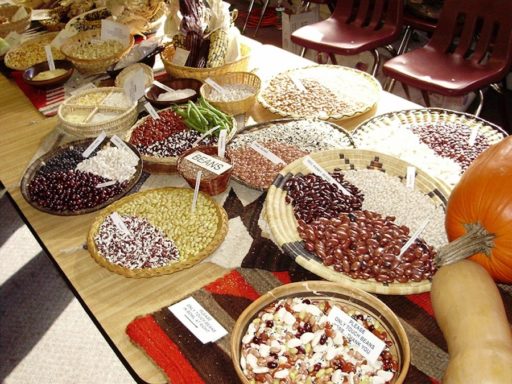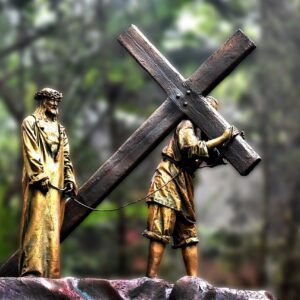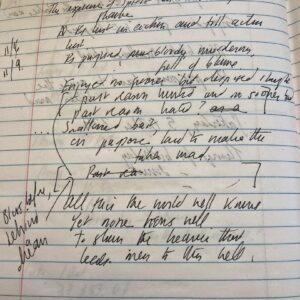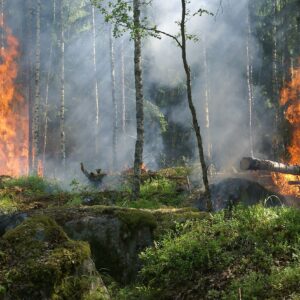In a year when overdue attention has at last fallen on the dark legacy of Canadian residential schools for indigenous children and, to a lesser extent, the equally disturbing history of off-reservation boarding schools in the United States, there’s another, far happier moment for Native nations that should not pass unnoticed: 2021 has been a good year for Native writers. In particular, US Poet Laureate Joy Harjo (Muscogee) is two years into her term, while the Pulitzer Prize in Fiction and Poetry went to Louise Erdrich (Anishinaabe/Turtle Mountain Chippewa) and Natalie Diaz (Mojave/Gila River), respectively. One might even call this a Native renaissance if that contested term weren’t already applied to the bountiful literary harvest that followed the publication of House Made of Dawn by N. Scott Momaday (Kiowa) in 1968. I say “contested” because historically significant Native writers such as John Rollin Ridge (Cherokee) and D’arcy McNickle (Salish Kootenai) long predate this so-called renaissance, and writers typically associated with it such as Harjo and Erdrich are actively publishing. Nor is consideration by the Pulitzer Prize Board entirely new. Momaday won the fiction award in 1969 and Erdrich, Linda Hogan (Chickasaw), and Tommy Orange (Cheyenne/Arapaho) have since been named finalists.
Still, no matter how valid the term may be, the “Native literary renaissance” culminated years of momentous social change for indigenous peoples in the United States. In the wake of World War II and the Korean War, thousands of veterans returned to their reservations psychologically wounded and politically marginalized, marking a period of crisis that eventually found literary expression. Momaday’s House Made of Dawn and Laguna author Leslie Marmon Silko’s 1977 novel, Ceremony, both feature soldiers turning to traditional healing ways for what is now called Post Traumatic Stress Disorder. Erdrich’s new novel, The Night Watchman, is a fictionalized account of her grandfather’s resistance to “termination,” the US government’s attempt to formally and unilaterally renege on its many treaty obligations to federally recognized tribes. Native sovereignty had reached an absolute nadir in the early 1950s. Indigenous religious practices had long been outlawed. Children were forced to attend government sponsored boarding schools where students were severely punished for speaking traditional languages. Warriors who went to war in service to a country that had disinherited their ancestors had little access to rudimentary health care after discharge. Against a growing tide of indigenous activism, termination remained explicit federal policy until 1970 when that unlikeliest of political heroes, Richard M. Nixon, publicly repudiated it, setting in motion a legislative process that would produce the 1975 Indian Self Determination Act and the 1978 Indian Religious Freedom and Indian Child Welfare Acts. That these events correspond to an efflorescence of indigenous literature should not come as a surprise.
Perhaps it’s better, then, to call this current moment long overdue recognition of an underappreciated literary banquet. There are, of course, other notable Native prose authors such as Sherman Alexie (Spokane/Coeur d’Alene) and Vine Deloria, Jr. (Standing Rock Sioux), but what Native poets can most US readers name beyond Harjo and Diaz? Fortunately for those who — like me — are not of indigenous descent, three well curated poetry anthologies have appeared in recent years to remedy that.
The first of these, New Poets of Native Nations (Graywolf Press, 2018), edited by Heid E. Erdrich (Louise Erdrich’s sister and a distinguished poet in her own right), features twenty-one indigenous writers whose poetry debuted in the twenty-first century. Some, like Natalie Diaz, have since achieved a large audience. Others, such as Layli Long Soldier (Oglala Lakota) and Margaret Noodin (Anishinaabe) are garnering broader recognition through venues like the On Being Project and the Poetry Foundation. In the editor’s introduction, we learn that this book has no unifying theme other than to showcase writers with “a clear connection to a Native nation” who represent “the lived realities of Native people” while refusing to “remain invisible in the world we all inhabit now.” Some are overtly political. Most are deeply personal. All are highly crafted and worthy of attention.
I’m particularly fond of Tupelo Press’s 2019 anthology, Native Voices: Indigenous American Poetry, Craft, and Conversations, edited by CMarie Fuhrman and Dean Rader. The volume provides a generous sampling of verse from forty-four living poets as well as a brief essay, interview, or poem of influence shedding light on each writer’s craft and aesthetic vision. The collection moves from familiar names — Carter Revard (Osage), Diane Glancy (Cherokee), and the Erdrich sisters — to emerging voices, including several featured in New Poets of Native Nations. Native languages such as Diné bizaad (Navajo) and Anishinaabemowin (Ojibwe) make brief appearances, reminding readers that these poets have appropriated the colonizer’s speech while retaining or reclaiming their first tongue. As Kimberly Blaeser (Anishinaabe) writes, the contemporary Native writer hears and feels “the heartbeat of both resistance and continuance.”
The most comprehensive new anthology, When the Light of the World Was Subdued, Our Songs Came Through (Norton, 2020), edited by Joy Harjo, is arranged in five regional groupings, each introduced by a Native poet, and includes verse from more than 160 poets writing over the course of three and a half centuries. Here one gets a feel for the continuity and variety of indigenous poetry, debunking claims that Native literature is somehow new or necessarily derivative, while putting the late twentieth century “renaissance” in historical context. As Harjo notes in a lyrically written introduction to the volume, there are 573 federally recognized indigenous tribal nations in the mainland United States speaking more than 150 indigenous languages. There is no such thing as a generic Native American, which helps explain why indigenous writers are so attentive to the particular people, tradition, and land to which they are irrevocably connected.
Indeed, if there are thematic threads running through the rich poetic fabric of these anthologies, they include affection for the land, the significance of place, membership in community, an awareness of creaturely limits, and ongoing resistance against the forces of exploitation and consumption. These, of course, are not unique to Native writers — the same list aptly describes the work of Wendell Berry — but they form something like a musical pulse over which play diverse melodies of historical and contemporary indigenous experience. What joins these many writers, Harjo asserts, is a shared history:
Our existence as sentient beings in the establishment of this country was denied. Our presence is still an afterthought, and fraught with tension, because our continued presence means that the mythic storyline of the founding of this country is inaccurate. The United States is a very young country and has been in existence for only a few hundred years. Indigenous peoples have been here for thousands of years and we are still here.
The trope of “the vanishing Indian” has always been a convenient myth. Reminding the descendants of immigrants of that comes with the Native writer’s job description. Beyond that, however, the poets featured in these three books provide the hungry reader with a delicious home cooked feast. It’s past time non-Natives recognize this astonishing act of hospitality and learn a new, far more congenial meaning to that old supposed insult, “Indian giver.”
Brian Volck is a pediatrician and writer living in Baltimore. He is the author of a poetry collection, Flesh Becomes Word, and a memoir, Attending Others: A Doctor’s Education in Bodies and Words. His website is Brianvolck.com





